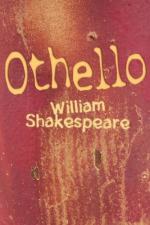|
This section contains 3,678 words (approx. 13 pages at 300 words per page) |

|
SOURCE: Taylor, Estelle W. “The Ironic Equation in Shakespeare's Othello: Appearances Equal Reality.” CLA Journal 21, no. 2 (December 1977): 202-11.
In the following essay, Taylor examines Iago as the initiator of the play's central irony: that illusion is mistaken for reality. The critic notes that Iago himself becomes victimized by this misconception, as do most of the other characters in Othello.
Shakespeare rivals the Greek playwrights in the extent to which he is able to show man grappling with, trying to understand or capitalize on, conquer or evade the ironies of life. He was endowed with the genius to use with the greatest effectiveness, especially in the tragedies of Hamlet, Lear, Othello, and Macbeth, combinations of ironic devices: dramatic irony, irony of expression, irony of situation. What is so striking, however, what makes each of these tragedies “work” century after century, for a variety of actors and audiences, is the...
|
This section contains 3,678 words (approx. 13 pages at 300 words per page) |

|


